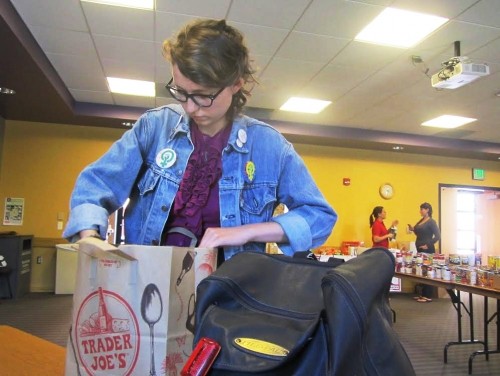Listening to conversations about dining on campus, I found there was a common theme last year: It was difficult to find accessible, healthy food.
I think we’ll find that to be less of a problem this year, especially with Nrich Urban Market recently opening in the Student Union Memorial Center and a new service called Instacart, which will deliver groceries to campus.
However, despite an expanded variety of options to purchase fresh fruits and vegetables, the problem of food insecurity has hardly been addressed.
Food insecurity is the “state of being without reliable access to a sufficient quantity of affordable, nutritious food,” according to the Oxford Dictionary. It is a widespread problem on college campuses across the nation. While food insecurity only impacts 14 percent of households, as of 2015, 48 percent of college students claim to be food insecure, according to the National Student Campaign Against Hunger and Homelessness. This problem disproportionately impacts first-generation college students, students of color and students who need financial aid.
Today, these students still have few resources to address this problem.
RELATED: Campus Guide’17: Navigating healthy food on campus
Last year, I was excited to see Nrich open. I saw that it increased my options to buy healthy food on campus. Though there’s a valid argument that Nrich’s variety is small, for the first time in my college career, I didn’t have to travel over a mile to buy an onion.
Nrich opens up options for students with more meal plan money than they need. But for students who need to ration their meal plan to a few dollars a day, or who cannot afford a meal plan at all, Nrich can be incredibly expensive for the value received.

A $5 salad at Nrich leaves me much less full than $5 worth of food at Papa John’s or Steak and Shake. These choices that many students face are not necessarily about health or feeling great, but about not being hungry.
The only time I ever get that $1.50 onion is if I really need it. Otherwise, I wait for the 30-cent one at Fry’s. I know that I, having a car, have much more access to that option than other students do.
I recently learned about Instacart, and I was excited that it might help the students without cars that NRich leaves out. However, I looked into its services and realized that, after the fun two-week free delivery trial, it ran into the same problems as NRich. Instacart grocery delivery will definitely help better-off students access groceries, but students with small budgets are left out.
The prices listed on the website are about the same price as if I was to buy groceries in-store — though, sometimes it’s a bit more. This is manageable, but then the fees start piling on.
There’s a 10-percent service fee, a $5.99 delivery fee and, if it’s busy, more fees. If you want less than $35 in groceries, a potential for more fees. If you want packaged foods, it has to be name-brand.
It’s possible to skip the delivery fee if you wanted to buy a $149 membership for the year. For me at least, I will never be able to buy enough groceries to make that price reasonable.
RELATED: Grocery delivery increases food options for students on campus
They also don’t honor in-store sales or coupons. Yes, Instacart has its own coupons, and quite a lot of them, but when I browsed the list for Fry’s, none of these coupons were for fresh fruits or vegetables.
This does not mean that Instacart is evil, and I’m sure it will allow many students to have reliable access to groceries. It just means that students who rely on the lowest-price generic brands, on-sale produce and coupons in order to stretch their dollar as far as it needs to go will not be able to use this service. These students will still not have access to affordable groceries unless they have reliable transportation.
The best option the university has to offer for food insecure students is Campus Pantry. It does wonders by providing free produce and packaged goods for students. I had a couple of friends last year who depended on this organization for a substantial part of their weekly sustenance. However, this is not enough. It’s unrealistic for the university and its students to expect Campus Pantry, which relies on food donations from UA clubs and community members, to solve the entire problem for our campus.
While the presence of healthy food exists now, there is still a great need for affordable healthy food. As the cost of college continues to rise, this will become an even greater necessity.
Follow Toni Marcheva on Twitter









